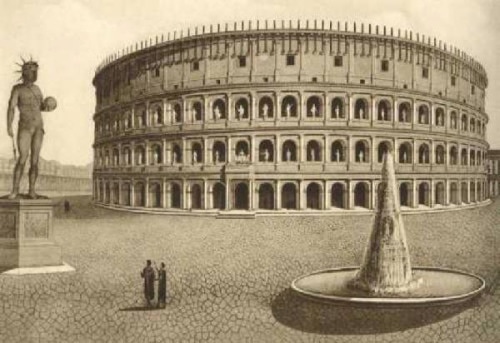The inaugural festival lasted 100 days and more than 500 beast and who knows how many gladiators were killed during this grand opening period.
During lunch- time, these very violent games where replaced by something even more cruel: the execution of death sentences.
The only link with Nero is that the name Colosseum comes probably from the Nero’s colossal statue erected just near the Flavian Amphitheatre that was constructed on the side of the lake in the gardens of Nero’s Domus Aurea.
In fact, the monument remained still very important for the Romans, even after the fall of the Roman Empire, despite a lot of pillages (St Peter and different palaces where built with the travertine stones stolen to the Colosseum) and 2 or 3 earthquake (in 407, in 1231 and in 1349).
During all the Middle age, there were slaughterhouses, stables and many craftsman shops inside the monument. In the time of the wars betweens two families, the Frangipane and the Annibaldi , in the 12th century, the Frangipane constructed a tower and a timber walkway used by their soldiers, on the top of the south flank of the amphitheatre. Later, somebody opened a hospital. And, thanks to a particularly good microclimate, in the 17th century, the Colosseum had a fantastic botanical garden with more than 400 different plants.
All this unknown history of almost 2000 years is told by the remnants, paintings, drawings, models etc… exposed. Without forgetting the myth of the Colosseum that is kept alive by so many “peplum” films that are part of the program of this exceptional exhibition opened until the 8 January 2018.






